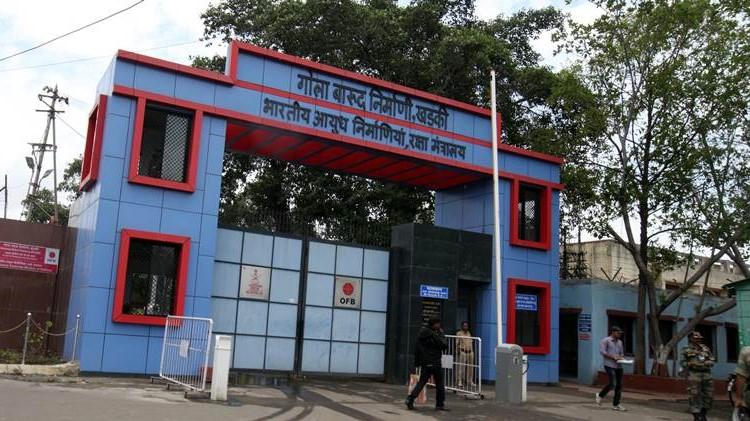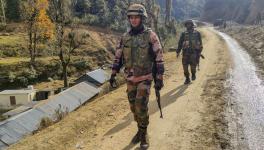Ongoing Defence “Reforms” May Not Solve Indian Army’s Ammunition Shortage Problem

For quite some time now, there have been reports that the Indian Army does not have sufficient stocks of ammunition.
There are two standards that have been laid out with regard to the level of ammunition stockpiles that the country is supposed to maintain. One is the War Wastage Reserve (WWR) scales, according to which India should maintain ammunition reserves for 40 days of intense war. The second is the Minimum Acceptable Risk Level (MARL) of ammunition, which mandates that ammunition reserves should be sufficient for 20 days of intense war.
According to a report by the former Comptroller and Auditor General (CAG) Shashi Kant Sharma which was tabled in the Parliament in July 2017, 80 per cent of the army's 152 types of ammunition did not meet the WWR levels, and 55 per cent of ammunition items did not meet the MARL levels.
Criticism has often been directed against the ordnance factories in the country for not being able to meet the production targets. But typically the voice of the Ordnance Factories does not find a place in media reports and analyses. Newsclick spoke to C Srikumar, General Secretary of the All India Defence Employees' Federation (AIDEF) on the issue.
“Unfortunately the Ordnance Factory Board being a government department, it doesn’t given any response to the criticisms levelled against it. And when we [unions] respond, nobody publishes it,” said Srikumar.
“There are different types of ammunition used in different types of weapons. We on our own do not manufacture all of these. The Army tells us, every year, that they want X amount of this particular ammunition, Y amount of this ammunition, Z amount of this ammunition and so on. And after they tell us, we procure the raw materials, components and other things. Historically in ammunition manufacturing, different types of factories are involved. This is because of strategic reasons. You cannot keep all the eggs in one basket.
Therefore strategically, the metallurgical factories make the shells. Then those shells will be shifted to the engineering factories where the machining operation will take place. After the forging is done, the bomb will be brought to the engineering factories, where it will be given proper shape. Then it will go to the filling factories.
For these filling factories, there are three chemical factories which are manufacturing explosives and chemicals. One is in Aruvankadu, another is in Itarsi, another is in Bhandara, and another is the High Explosives Factory, Pune.
So, depending upon what type of shell you are going to fill up, the ammunition should be loaded. And the filling factories will make the final ammunition.
Then it has to be packed and despatched to the various ammunition depots. This is the system.
To manufacture ammunition, ideally they should give us five years’ load – what they call “roll-on-indent”. Only then can we procure material, procure chemicals and manufacture all these things. These things are not readily available in the market. And nobody produces and keeps it in the showroom. So, we have to tell even the private players who are involved in this in advance – because there is no customer for these products other than the ordnance factories.
Until and unless you place an order for them, they will not produce these chemicals, because these are all banned items. Many people who criticise us do not understand these practical problems,” Srikumar said.
“Now I will give you a simple example. Take the case of the ammunition box, the production of which has now been outsourced with the claim that it is a “non-core” item. Now see what happens. The Ordnance Factory places an order on these private players for the ammunition boxes. But they don’t supply the boxes. The reason they give is something like, “When we took the order, the price of steel was this much, but when we started doing the work, steel prices have gone up. So we cannot supply at the original rate.
So ultimately Ordnance Factories have stopped producing ammunition box, and private players are also not supplying. The produced ammunition remains in the factory; you cannot despatch it.
These types of problems nobody speaks about, nobody writes about.
The ammunition stocks also cannot be kept for long. Ammunition has to be regularly used by the Army in the training of the jawans and in trials – because these are all chemicals. They have a shelf life. These are being stored in different ammunition depots at different temperatures. You can keep them at the most for 45 days. If you keep them beyond that in a depot and if a leakage takes place, the whole depot will be busted. You cannot have a one-year ammunition stock in your depot.
There is also another thing. Even the defects of ammunition that is imported from abroad are being portrayed as the defects of the Ordnance Factories’ ammunition. Then we have to send an expert team to inspect metals and components… The results [which are often favourable to the Ordnance Factories] are not published by the newspapers.”
“The overall purpose behind this campaign against the Ordnance Factories is to destroy the public sector. The idea is to go on inflicting damage so that in the public mind, a wrong image of the public sector is created. This is the hidden agenda,” Srikumar added.
The current bout of defence reforms entail the outsourcing of the production of 250 items by classifying them as “non-core”. By all indications, these measures are unlikely to solve the problems faced by India’s armed forces, including the shortage of ammunition.
Get the latest reports & analysis with people's perspective on Protests, movements & deep analytical videos, discussions of the current affairs in your Telegram app. Subscribe to NewsClick's Telegram channel & get Real-Time updates on stories, as they get published on our website.
























